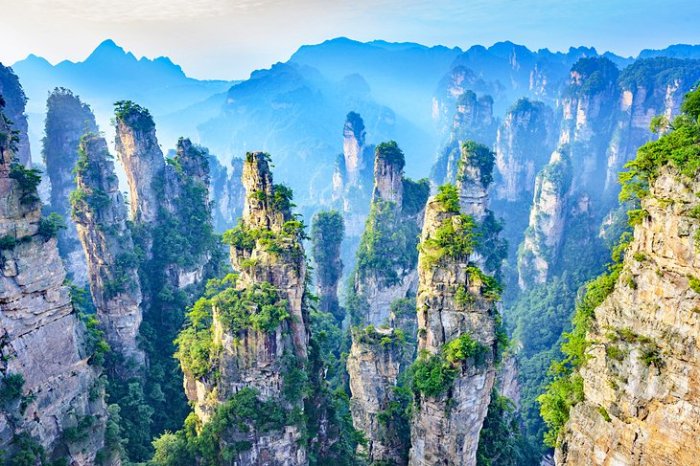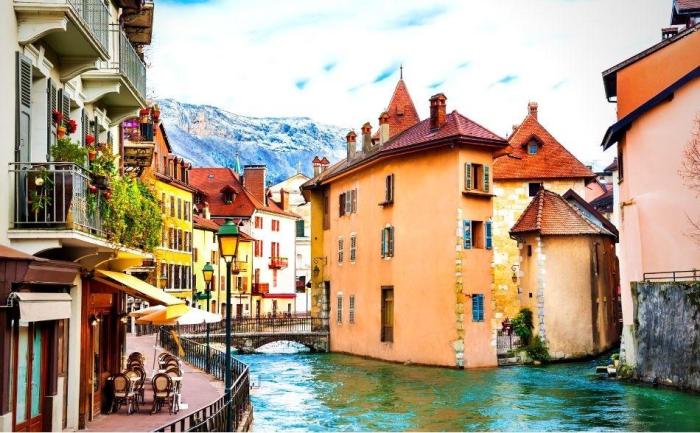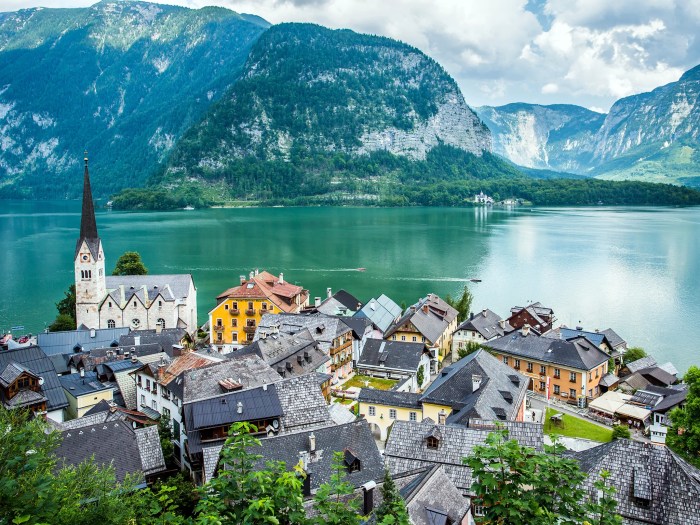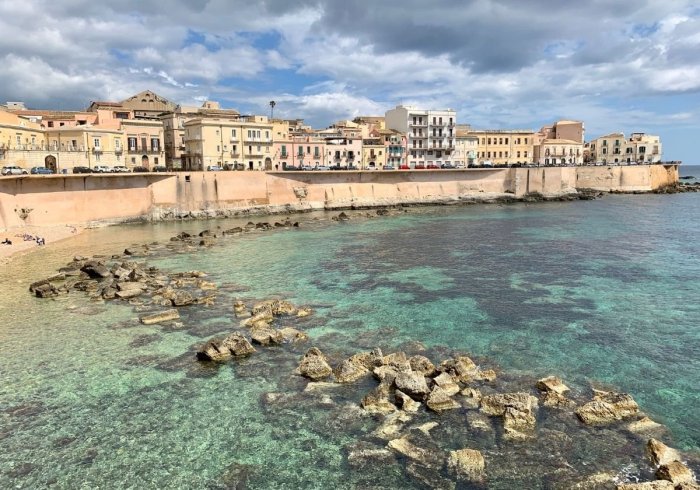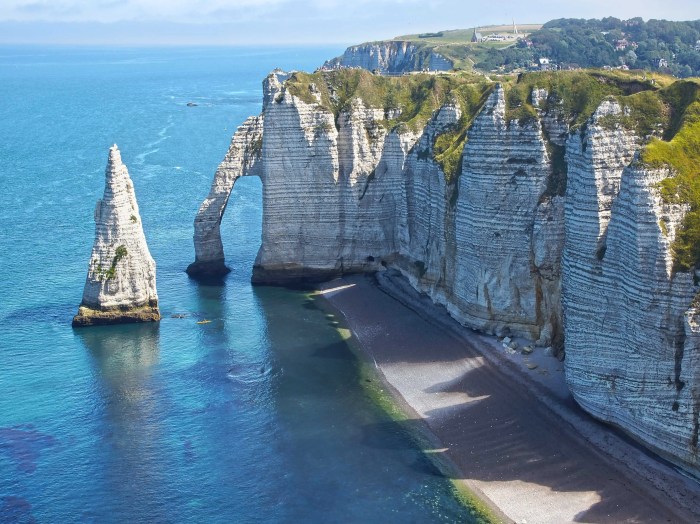Top 10 Places To Visit In Bavaria
Top 10 Places To Visit In Bavaria sets the stage for an epic adventure through a region steeped in history, breathtaking landscapes, and vibrant culture. Bavaria, a state in southern Germany, is a place where fairytale castles meet charming villages, and where the Alps rise majestically above sparkling lakes.
From the iconic Neuschwanstein Castle to the bustling city of Munich, Bavaria offers something for everyone, whether you’re a history buff, an outdoor enthusiast, or simply looking for a relaxing getaway.
This guide will take you on a journey through the best of Bavaria, highlighting its top attractions, unique experiences, and hidden gems. Get ready to immerse yourself in Bavarian traditions, explore its captivating landscapes, and discover why this region has captivated travelers for centuries.
Majestic Castles and Palaces
Bavaria is renowned for its stunning castles and palaces, each with a rich history and architectural splendor that reflects the region’s vibrant past. These magnificent structures offer a glimpse into the lives of Bavarian royalty and the evolution of architectural styles over centuries.
Neuschwanstein Castle
Neuschwanstein Castle, perched atop a rugged cliff, is perhaps Bavaria’s most iconic landmark. Built in the late 19th century by King Ludwig II, it is a masterpiece of Romanesque Revival architecture, drawing inspiration from medieval German castles and Wagnerian opera.
The castle’s distinctive features include its soaring towers, intricate turrets, and a grand hall adorned with elaborate murals depicting scenes from Wagner’s operas. King Ludwig II, a passionate admirer of Wagner, envisioned Neuschwanstein as a retreat where he could escape the pressures of his reign and indulge in his artistic passions.
Bavaria is pretty awesome, with its castles, beer gardens, and the Alps. But if you’re looking for a different kind of history, you might want to check out Top 10 Places To Visit in Normandy. Normandy’s got a whole different vibe, with beaches, WWII history, and some pretty cool architecture.
After you’ve seen all the sights, though, you’ll definitely want to come back to Bavaria and hit up the Neuschwanstein Castle.
While the castle was never fully completed during Ludwig’s lifetime, it has become a symbol of Bavarian romanticism and a popular tourist destination.
Architectural Styles of Munich and Linderhof
The palaces of Munich and Linderhof showcase a diverse range of architectural styles that reflect the evolving tastes of Bavarian rulers. Munich’s Residenz, the former royal residence, is a sprawling complex that encompasses elements of Renaissance, Baroque, and Rococo architecture.
Bavaria is seriously stunning, and if you’re looking for the best spots, you’ve got to check out the Top 10 Places To Visit In Bavaria. You’ll find everything from fairytale castles to bustling cities, and don’t forget about the amazing Bavarian Alps! If you’re looking for even more inspiration, you should definitely check out the Top 25 Places To Visit In Germany list, which will give you a great overview of the whole country.
After that, you’ll be ready to dive back into the Top 10 Places To Visit In Bavaria and plan your perfect trip!
The palace’s grand halls, opulent decorations, and intricate gardens reflect the grandeur and sophistication of the Bavarian court. Linderhof Palace, in contrast, is a smaller and more intimate structure, built in the late 19th century by King Ludwig II. Its architecture is heavily influenced by French Rococo, with ornate interiors, lavish gardens, and a charming grotto.
This contrast in style reflects the differing personalities and artistic preferences of the Bavarian monarchs who commissioned these palaces.
Role of Castles and Palaces in Bavarian History and Culture, Top 10 Places To Visit In Bavaria
Castles and palaces have played a significant role in Bavarian history and culture, serving as symbols of power, prestige, and artistic expression. From the medieval era onward, these structures served as centers of administration, military defense, and cultural patronage. Bavarian rulers, through their patronage of art, music, and architecture, fostered a rich cultural tradition that continues to inspire and captivate visitors today.
These grand edifices stand as testaments to the enduring legacy of Bavaria’s royal past, reminding us of the region’s rich history and its enduring artistic heritage.
Bavarian Alps and Nature
The Bavarian Alps are a stunning natural wonderland, offering breathtaking views, diverse landscapes, and exciting outdoor adventures. Whether you’re an avid hiker, a nature enthusiast, or simply looking to escape the hustle and bustle of city life, the Bavarian Alps have something for everyone.
Hiking Trails in the Bavarian Alps
The Bavarian Alps boast a vast network of hiking trails catering to all levels of experience. From gentle strolls through alpine meadows to challenging climbs to mountain peaks, there’s a trail for everyone. For those seeking a leisurely hike, the Königsweg(King’s Trail) offers picturesque views and easy accessibility.
This well-maintained trail stretches for over 100 kilometers, passing through charming villages and serene lakes. Experienced hikers can challenge themselves on the Alpine Club Trail, which traverses the entire length of the Bavarian Alps. This demanding trail offers breathtaking views of towering peaks, glaciers, and alpine lakes.
Flora and Fauna of the Bavarian Alps
The Bavarian Alps are home to a diverse array of flora and fauna, showcasing the region’s unique ecological balance. The alpine meadows are carpeted with colorful wildflowers, including edelweiss, gentian, and alpine roses. The region is also home to a variety of animals, including the iconic chamois, marmot, and golden eagle.
The forests are inhabited by red deer, roe deer, and wild boar, while the lakes and rivers teem with trout, char, and other freshwater fish.
Top 5 Lakes in Bavaria
The Bavarian Alps are dotted with numerous stunning lakes, each offering unique features and activities. Here are five of the most popular:
- Starnberger See: The largest lake in Bavaria, Starnberger See offers stunning views of the Alps, crystal-clear waters, and a variety of water sports. It’s also known for its charming lakeside towns, including Starnberg and Tutzing.
- Tegernsee: Nestled amidst picturesque mountain scenery, Tegernsee is a popular destination for swimming, sailing, and hiking. The lake is also known for its historic monastery and its charming lakeside promenade.
- Chiemsee: Known as the “Bavarian Sea,” Chiemsee is the largest lake in the region. It boasts three islands, including Herrenchiemsee, home to a lavish palace built by King Ludwig II.
- Ammersee: This serene lake is a popular spot for swimming, sailing, and fishing. It’s also known for its charming lakeside towns, including Dießen and Herrsching.
- Eibsee: Situated at the foot of the Zugspitze, Eibsee offers breathtaking views of the highest mountain in Germany. The lake is a popular destination for hiking, kayaking, and simply enjoying the stunning scenery.
Munich
Munich, the capital of Bavaria, is a vibrant city brimming with history, culture, and charm. From its iconic architecture to its lively beer gardens, Munich offers a captivating blend of tradition and modernity. As a major cultural hub, Munich is renowned for its world-class museums, theaters, and festivals, including the legendary Oktoberfest.
A One-Day Itinerary for Exploring Munich’s Historic Center
A one-day itinerary for exploring Munich’s historic center could include:
- Start your day at the Marienplatz, Munich’s central square. Here, you can marvel at the impressive New Town Hall (Neues Rathaus), adorned with its iconic Glockenspiel, which features a puppet show twice a day.
- Next, explore the surrounding streets, including the pedestrian-friendly Kaufinger Strasse and Neuhauser Strasse, known for their shops, cafes, and historic buildings.
- Take a stroll through the Viktualienmarkt, a bustling outdoor market offering fresh produce, local delicacies, and traditional Bavarian snacks.
- In the afternoon, immerse yourself in the vibrant atmosphere of the Hofbräuhaus, Munich’s most famous beer hall, where you can sample traditional Bavarian beer and cuisine.
- End your day with a visit to the Deutsches Museum, one of the world’s largest science and technology museums, showcasing a fascinating array of exhibits.
The Cultural Significance of Oktoberfest
Oktoberfest is a world-renowned festival celebrated annually in Munich, attracting millions of visitors from around the globe. The festival, which typically takes place in late September and early October, is a celebration of Bavarian culture and tradition, featuring traditional music, dancing, and, of course, beer.
The origins of Oktoberfest can be traced back to 1810, when a royal wedding celebration was held in Munich. Since then, the festival has evolved into a grand spectacle, encompassing numerous beer tents, amusement rides, and a vibrant atmosphere. The cultural significance of Oktoberfest lies in its ability to unite people from all walks of life, fostering a sense of community and shared enjoyment.
It is a testament to Bavarian hospitality and the enduring power of tradition.
Museums in Munich
Munich boasts a rich collection of museums, each offering a unique perspective on art, history, and culture.
| Museum | Highlights | Opening Hours |
|---|---|---|
| Alte Pinakothek | One of the world’s most important collections of Old Master paintings, featuring works by renowned artists such as Dürer, Raphael, and Rubens. | Tuesday-Sunday, 10:00 AM-6:00 PM |
| Neue Pinakothek | A collection of 19th-century and early 20th-century art, including works by Impressionist, Post-Impressionist, and Expressionist masters. | Tuesday-Sunday, 10:00 AM-6:00 PM |
| Pinakothek der Moderne | A modern art museum showcasing a diverse range of contemporary art, including painting, sculpture, photography, and design. | Tuesday-Sunday, 10:00 AM-6:00 PM |
| Deutsches Museum | One of the world’s largest science and technology museums, featuring interactive exhibits that explore the history of transportation, energy, and communication. | Tuesday-Sunday, 9:00 AM-5:00 PM |
| BMW Museum | A museum dedicated to the history and evolution of BMW, featuring iconic cars, motorcycles, and engines. | Tuesday-Sunday, 10:00 AM-6:00 PM |
Bavarian Culture and Traditions
Bavaria is a region brimming with rich cultural traditions that have been passed down through generations. From the iconic lederhosen and dirndl to the lively music and vibrant dances, Bavarian culture is a captivating blend of history, heritage, and festive spirit.
Traditional Bavarian Clothing
Bavarian traditional clothing is a visual representation of the region’s heritage and pride. The most recognizable garments are the lederhosen for men and the dirndl for women. Lederhosen are leather breeches that are typically worn with a traditional shirt and suspenders.
They come in various styles, including knee-length, short, and long versions, and are often adorned with decorative embroidery and buttons. The dirndl is a traditional dress that consists of a bodice, a skirt, and an apron. The bodice can be either fitted or loose, and the skirt is typically gathered or pleated.
Dirndls are often adorned with lace, ribbons, and other embellishments.The color and style of the dirndl apron can signify the wearer’s marital status. For example, a single woman would wear a bow on the left side of her apron, while a married woman would wear it on the right.
Bavarian Music and Cuisine
Bavarian music is characterized by its lively melodies and strong rhythms. The most popular instrument is the zither, a stringed instrument that is played with a plectrum. Other traditional instruments include the accordion, the trumpet, and the clarinet.Bavarian folk music often features themes of love, nature, and the joys of life.
It is commonly played at festivals, weddings, and other celebrations.Bavarian cuisine is hearty and flavorful, featuring traditional dishes that have been enjoyed for centuries. Some of the most popular dishes include:
- Schweinshaxe:Roasted pork knuckle, a classic Bavarian dish that is typically served with sauerkraut and dumplings.
- Weisswurst:White sausage, a popular breakfast dish that is made with veal and pork.
- Brezel:Soft pretzel, a staple of Bavarian cuisine that is often served with beer.
- Obatzda:Bavarian cheese spread, a creamy and flavorful cheese spread that is typically served with bread and beer.
Bavarian Dialect and Language
The Bavarian dialect is a distinct variety of German that is spoken in Bavaria and surrounding regions. It is characterized by its unique pronunciation, vocabulary, and grammar. While Standard German is the official language of Germany, the Bavarian dialect is still widely spoken in Bavaria, especially in rural areas.
The Bavarian dialect is a source of pride for many Bavarians, and it is often seen as a symbol of their cultural identity. It is also a reminder of the region’s long and rich history.
Traditional Bavarian Dances
Bavarian dances are a lively and expressive form of folk dance that is often performed at festivals and celebrations. One of the most famous Bavarian dances is the Schuhplattler. The Schuhplattler is a traditional dance that is performed by men in lederhosen.
It involves a series of intricate footwork and hand movements that are accompanied by clapping and stamping. The Schuhplattler is a highly energetic dance that requires both strength and coordination. The Schuhplattler is a popular dance that is often performed at Oktoberfest, the world-famous beer festival held in Munich.
It is a symbol of Bavarian culture and tradition.
Romantic Road: A Scenic Drive
The Romantic Road, a 220-mile stretch winding through southern Germany, is a captivating journey that encapsulates the essence of Bavaria. This scenic route, dotted with charming towns and historical landmarks, offers a glimpse into the region’s rich history, culture, and breathtaking landscapes.
The Best Time to Travel
The Romantic Road is a year-round destination, but the optimal time to experience its beauty depends on your preferences. Spring (April-May) and autumn (September-October) offer pleasant temperatures, vibrant foliage, and fewer crowds. Summer (June-August) is ideal for outdoor activities, but it can be hot and crowded.
Winter (December-February) transforms the landscape into a snowy wonderland, perfect for a festive getaway.
Top 5 Must-See Stops
The Romantic Road offers a plethora of charming towns and historical sites, but here are five must-see stops that capture the essence of this enchanting route:
- Rothenburg ob der Tauber:A medieval gem frozen in time, Rothenburg ob der Tauber is a quintessential Romantic Road destination. Its well-preserved medieval walls, cobblestone streets, and half-timbered houses transport visitors to a bygone era. Notable attractions include the Rothenburg Christmas Market, the medieval city walls, and the Plönlein, a picturesque intersection at the heart of the city.
- Harburg:Perched atop a hill overlooking the Danube River, Harburg is a medieval castle with a rich history. Its imposing towers and ramparts offer panoramic views of the surrounding countryside. The castle’s interior houses a museum showcasing the history of the castle and the region.
- Nördlingen:Nördlingen, a town with a unique history, is built within a meteorite impact crater. This cosmic origin is evident in the town’s unique geology and architecture. Visitors can explore the Ries Crater Museum, climb the St. George’s Church tower for panoramic views, and wander through the town’s charming streets.
- Füssen:Nestled at the foot of the Bavarian Alps, Füssen is a charming town renowned for its proximity to Neuschwanstein Castle, a fairytale-like castle built by King Ludwig II. Füssen also offers picturesque lakes, charming streets, and a vibrant cultural scene.
- Schwangau:Home to Neuschwanstein Castle and Hohenschwangau Castle, Schwangau is a must-visit for any Romantic Road traveler. Neuschwanstein, inspired by Wagner’s operas, is a breathtaking architectural masterpiece. Hohenschwangau, a more modest castle, served as the childhood home of King Ludwig II.
Bavarian Lakes and Resorts
Bavaria’s stunning lakes are not just scenic backdrops; they are integral to the region’s charm, offering a wide range of recreational activities and picturesque resort towns. From the tranquil shores of Lake Starnberg to the grandeur of Lake Chiemsee, these aquatic gems provide a welcome escape from the hustle and bustle of city life.
Lake Starnberg and Lake Chiemsee
Lake Starnberg, just outside Munich, is the largest lake in Bavaria and is known for its serene beauty and aristocratic history. It was a favorite retreat for King Ludwig II, who built the magnificent Schloss Berg on its shores. The lake is a haven for water sports enthusiasts, with opportunities for swimming, sailing, windsurfing, and kayaking.
For a more leisurely experience, visitors can enjoy scenic walks along the lakeshore, rent a boat, or take a ferry to one of the islands.Lake Chiemsee, also known as the “Bavarian Sea,” is the largest lake in Germany and boasts three islands, each with its own unique charm.
The most famous is Herrenchiemsee, home to King Ludwig II’s opulent palace, a lavish replica of the Palace of Versailles. The island of Frauenchiemsee is a tranquil retreat with a Benedictine monastery, while the smallest island, Herrenwörth, is known for its agricultural heritage.
Historic Towns and Villages: Top 10 Places To Visit In Bavaria
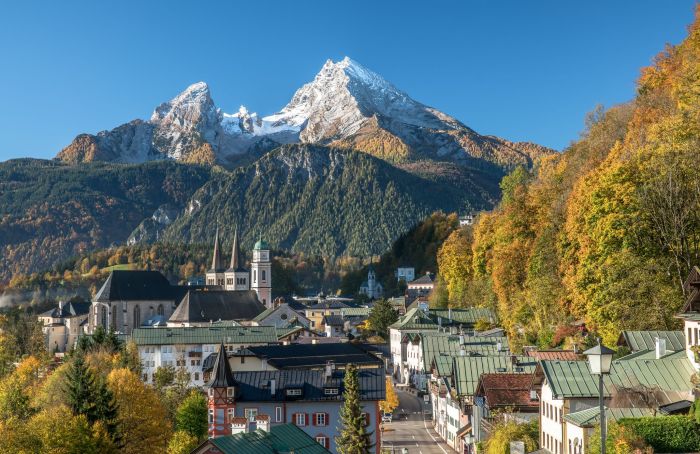
Bavaria is home to some of the most charming and well-preserved medieval towns and villages in all of Europe. These historic settlements offer a glimpse into the region’s rich history and culture, with their cobblestone streets, half-timbered houses, and towering churches.
Visiting these places is like stepping back in time, allowing you to explore the past and appreciate the beauty and craftsmanship of the bygone era.
Rothenburg ob der Tauber: A Medieval Gem
Rothenburg ob der Tauber is a picturesque medieval town that has remained remarkably unchanged over the centuries. Located in the heart of Franconia, this town is a true gem of Bavarian architecture and history. Its perfectly preserved medieval walls, winding streets, and charming houses transport visitors back to the Middle Ages.The town’s history is rich and fascinating.
Rothenburg was founded in the 12th century and quickly became an important trading center. It was a member of the Holy Roman Empire and played a significant role in the history of Germany. In the 16th century, the town experienced a period of prosperity, with its citizens enjoying a high standard of living.
However, the Thirty Years’ War (1618-1648) brought devastation to Rothenburg, and the town was nearly destroyed. Fortunately, it was able to rebuild itself and has since become a popular tourist destination.Rothenburg’s most notable attraction is its medieval city wall, which encircles the entire town.
Bavaria is totally awesome, with castles, mountains, and beer gardens. But if you’re looking for something truly mind-blowing, you gotta check out the Top 25 Natural Wonders Of The World. They’re like, totally on another level, and then you can come back to Bavaria and appreciate the beauty of the Alps and the Neuschwanstein Castle even more.
The wall is over 3 kilometers long and features 42 towers. Visitors can walk along the wall and enjoy panoramic views of the town and surrounding countryside. Other popular attractions include the Town Hall, the Plönlein (a charming little square with a beautiful view), the Kriminalmuseum (a museum dedicated to the history of crime and punishment), and the Christmas Museum.
Christmas Markets in Bavarian Towns
Christmas markets are a beloved tradition in Bavaria, and they are a major draw for visitors during the holiday season. These markets are typically held in the town squares and feature festive decorations, traditional crafts, and delicious food and drink.The tradition of Christmas markets in Bavaria dates back to the Middle Ages.
During this time, people would gather in the town squares to buy food, gifts, and other necessities for the holiday season. The markets were also a place for people to socialize and celebrate the coming of Christmas.Today, Christmas markets in Bavaria are still a popular tradition, and they are a great way to experience the magic of the holiday season.
Some of the most popular Christmas markets in Bavaria include those in Nuremberg, Munich, and Augsburg.
Top 5 Charming Bavarian Villages
Bavaria is dotted with charming villages that offer a unique glimpse into the region’s rich history and culture. Here are five of the most charming villages in Bavaria, each with its own unique attractions:
| Village | Unique Attractions |
|---|---|
| Oberammergau | Famous for its Passion Play, performed every ten years, and its beautiful woodcarvings. |
| Garmisch-Partenkirchen | A popular winter sports destination, known for its stunning scenery and the Zugspitze, Germany’s highest mountain. |
| Füssen | Home to Neuschwanstein Castle, a fairytale-like castle built by King Ludwig II, and the Hohenschwangau Castle. |
| Berchtesgaden | Located in the Bavarian Alps, known for its beautiful scenery, the Königssee lake, and the Eagle’s Nest, a former Nazi retreat. |
| Lindau | Located on an island in Lake Constance, known for its charming old town, the harbor, and the lighthouse. |
Bavarian Beer Culture
Bavaria is synonymous with beer, and for good reason. Its rich brewing history, centuries-old traditions, and unique beer styles make it a must-visit for any beer enthusiast. From the iconic “Reinheitsgebot” purity law to the world-renowned Oktoberfest, Bavarian beer culture is deeply ingrained in the region’s identity.
The History and Traditions of Bavarian Beer Brewing
Bavarian beer brewing dates back to the Middle Ages, with monasteries playing a crucial role in its development. The “Reinheitsgebot,” or “Purity Law,” enacted in 1516, established strict regulations for beer production, allowing only water, barley, hops, and yeast as ingredients.
This law, still in effect today, is considered the oldest food purity law in the world.Over the centuries, Bavarian brewing traditions evolved, with each region developing its own unique styles and techniques. The “Helles,” a pale lager, became the most popular beer in Bavaria, while other styles, such as the dark “Dunkles” and the strong “Bock,” also gained prominence.
Types of Bavarian Beer
Bavarian beer is known for its variety and quality, with each style offering a distinct flavor profile. Here’s a comparison of some of the most popular types:
- Helles: A light, pale lager with a clean, crisp, and slightly sweet flavor. It’s the most popular beer in Bavaria and is often served in traditional “Maß” glasses.
- Dunkles: A dark lager with a malty, toasty, and slightly sweet flavor. It’s typically brewed with a higher percentage of dark malt, giving it a rich, complex character.
- Bock: A strong, full-bodied lager with a high alcohol content. It’s typically brewed with a higher percentage of malt, resulting in a rich, complex flavor with notes of caramel, toffee, and fruit.
- Weissbier: A wheat beer with a cloudy appearance and a refreshing, slightly tart flavor. It’s typically brewed with a high percentage of wheat, resulting in a light and fruity beer.
- Pilsner: A pale lager with a crisp, hoppy, and slightly bitter flavor. It’s typically brewed with a higher percentage of hops, giving it a more intense and refreshing taste.
Top 5 Bavarian Breweries
Bavaria is home to countless breweries, each with its own unique history, traditions, and beer styles. Here are five of the most renowned breweries in the region:
- Augustiner-Bräu: Founded in 1328, Augustiner-Bräu is one of the oldest breweries in Munich. It’s known for its traditional brewing methods and its flagship “Augustiner Helles” lager. Tours and tastings are available at the brewery.
- Hofbräuhaus: Founded in 1589, Hofbräuhaus is one of the most famous breweries in the world. It’s known for its lively atmosphere and its iconic “Hofbräu Original” lager. Tours and tastings are available at the brewery, and visitors can also enjoy a traditional Bavarian meal in the restaurant.
- Spaten-Franziskaner-Bräu: Founded in 1397, Spaten-Franziskaner-Bräu is one of the oldest breweries in Munich. It’s known for its traditional brewing methods and its flagship “Spaten Münchner Hell” lager. Tours and tastings are available at the brewery.
- Paulaner Brauerei: Founded in 1634, Paulaner Brauerei is one of the largest breweries in Bavaria. It’s known for its traditional brewing methods and its flagship “Paulaner Helles” lager. Tours and tastings are available at the brewery.
- Weihenstephaner: Founded in 1040, Weihenstephaner is the oldest brewery in the world. It’s known for its traditional brewing methods and its flagship “Weihenstephaner Hefeweissbier” wheat beer. Tours and tastings are available at the brewery.
Outdoor Activities and Adventure
Bavaria is a paradise for outdoor enthusiasts, offering a diverse range of activities that cater to all levels of experience. From the towering peaks of the Bavarian Alps to the tranquil shores of its pristine lakes, the region provides endless opportunities for adventure and exploration.
Whether you’re seeking adrenaline-pumping thrills or a peaceful escape into nature, Bavaria has something for everyone.
Skiing and Snowboarding in the Bavarian Alps
The Bavarian Alps are a world-renowned winter sports destination, boasting some of the best skiing and snowboarding in Europe. The region’s high peaks and abundant snowfall create ideal conditions for both beginners and experienced skiers. The Bavarian Alps offer a variety of slopes, ranging from gentle runs for beginners to challenging black diamond runs for experts.
- Garmisch-Partenkirchen: This iconic ski resort is home to the Zugspitze, Germany’s highest mountain. The resort offers a wide range of slopes, including the legendary Kandahar downhill run, which hosted the 1936 Winter Olympics.
- Oberstdorf: Known for its picturesque scenery and challenging slopes, Oberstdorf is a popular destination for experienced skiers. The resort is also home to the famous “Four Hills Tournament” ski jumping competition.
- Berchtesgadener Land: This region is known for its charming villages and stunning mountain scenery. The area offers a variety of ski resorts, including the family-friendly Jennerbahn and the more challenging Watzmann.
Kayaking, Paddleboarding, and Sailing on Bavarian Lakes
Bavaria’s numerous lakes provide idyllic settings for kayaking, paddleboarding, and sailing. The region’s calm waters and stunning scenery make it an ideal place to enjoy these water sports. Whether you’re a seasoned paddler or a beginner, there’s a lake to suit your skill level and preferences.
- Starnberger See: Located just outside of Munich, Starnberger See is Bavaria’s largest lake. The lake offers a variety of paddling and sailing opportunities, from gentle cruises around the shoreline to more challenging routes across the open water.
- Chiemsee: Known as the “Bavarian Sea,” Chiemsee is the third-largest lake in Germany. The lake is popular for its stunning scenery, including the Herrenchiemsee Palace, a replica of the Palace of Versailles.
- Ammersee: Located near the city of Augsburg, Ammersee is a smaller lake that offers a more peaceful paddling experience. The lake is surrounded by rolling hills and charming villages, making it an ideal destination for a relaxing day on the water.
Exploring the Bavarian Countryside
The Bavarian countryside is a tapestry of rolling hills, dense forests, and charming villages. Exploring this region is an adventure in itself, offering a unique blend of history, culture, and natural beauty. Whether you’re hiking through the forests, cycling along scenic trails, or simply driving through the countryside, Bavaria offers an unforgettable experience.
“The Bavarian countryside is a place where time seems to stand still.”
Art and Culture
Bavaria is not only renowned for its stunning landscapes and charming towns but also for its rich artistic heritage. From world-class museums showcasing masterpieces to vibrant cultural events, the region offers a plethora of experiences for art and culture enthusiasts.
Museums and Galleries
Bavaria boasts a collection of renowned museums and galleries that house impressive works of art spanning various periods and styles.
- The Alte Pinakothek in Munich is a treasure trove of European paintings from the 14th to 18th centuries, featuring masterpieces by renowned artists such as Albrecht Dürer, Raphael, and Rembrandt.
- The Neue Pinakothek, also in Munich, showcases 19th-century art, including works by Impressionists, Post-Impressionists, and early modern artists.
- The Pinakothek der Moderne, a modern art museum in Munich, features a comprehensive collection of 20th and 21st-century art, including paintings, sculptures, photography, and design.
- The Deutsches Museum in Munich is a science and technology museum that houses a vast collection of exhibits, including historical inventions, scientific instruments, and technological advancements.
Influence of Bavarian Composers and Musicians
Bavaria has played a significant role in the development of classical music, with many renowned composers and musicians hailing from the region.
- Richard Wagner, one of the most influential composers of the 19th century, was born in Leipzig but spent a significant portion of his life in Bavaria, where he composed some of his most famous operas, including “Die Meistersinger von Nürnberg” and “Parsifal.”
- Richard Strauss, another prominent composer, was born in Munich and is known for his operas, tone poems, and orchestral works, including “Also Sprach Zarathustra” and “Der Rosenkavalier.”
- The Munich Philharmonic Orchestra, one of the world’s leading orchestras, has a long and distinguished history, dating back to the 18th century.
Cultural Events and Festivals
Throughout the year, Bavaria hosts a wide array of cultural events and festivals that celebrate the region’s traditions and artistic heritage.
- The Oktoberfest, held annually in Munich, is the world’s largest beer festival, attracting millions of visitors from around the globe. It features traditional Bavarian music, food, and costumes, as well as numerous beer tents and amusement rides.
- The Passion Play in Oberammergau, a dramatic performance based on the Passion of Christ, takes place every ten years and is a major cultural event in Bavaria.
- The Summer in the City festival, held in Munich, is a multi-disciplinary festival that features music, dance, theater, and visual arts performances.
Final Wrap-Up
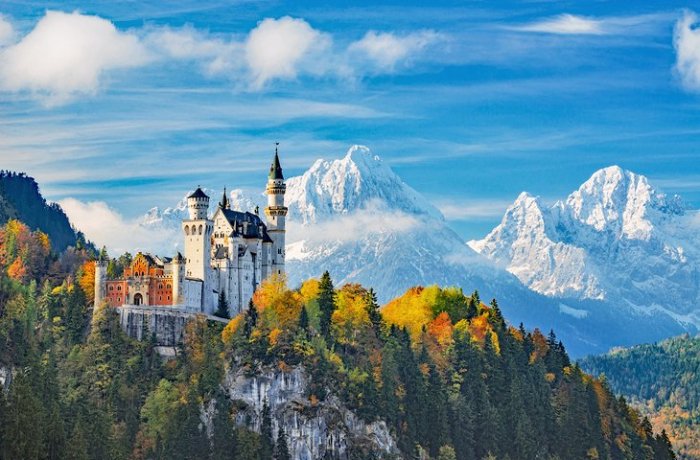
Whether you’re strolling through Munich’s historic streets, hiking through the majestic Alps, or indulging in Bavarian beer culture, Bavaria offers a truly unforgettable experience. So, pack your bags, grab your camera, and prepare to be amazed by the beauty and wonder of this captivating region.
From its majestic castles to its charming villages, Bavaria will leave a lasting impression on your heart and mind.
General Inquiries
What is the best time of year to visit Bavaria?
Bavaria is beautiful year-round, but the best time to visit depends on your interests. Spring and fall offer pleasant weather for hiking and exploring, while summer is ideal for swimming and water sports. Winter brings snow-covered landscapes perfect for skiing and snowboarding.
How long do I need to spend in Bavaria?
A week is a good amount of time to experience the highlights of Bavaria, but you could easily spend longer if you want to delve deeper into specific regions or activities.
Do I need to speak German to visit Bavaria?
While German is the official language, English is widely spoken in tourist areas. You’ll be able to get by with basic English, but learning a few German phrases will definitely enhance your experience.
What is the currency used in Bavaria?
The currency used in Bavaria is the Euro (€).

